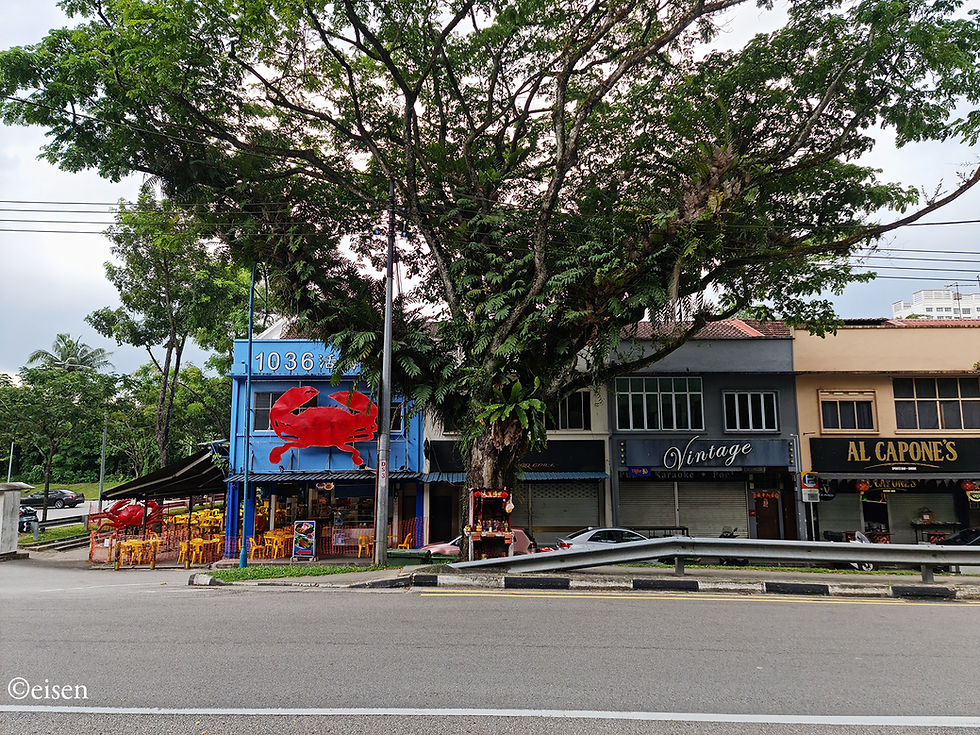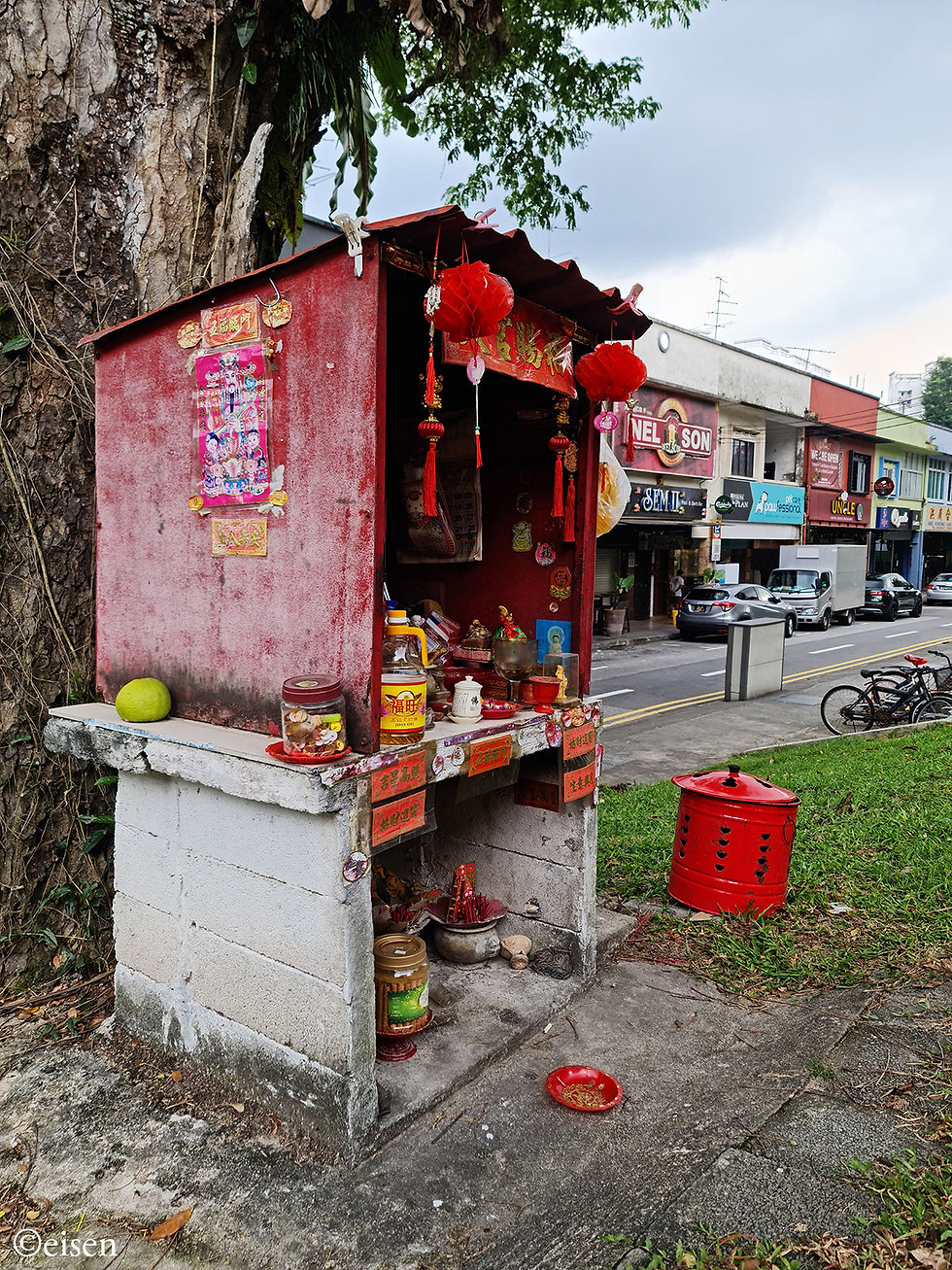The Sembawang Road North Roadside Shrine
- Eisen
- Apr 17, 2022
- 2 min read
Updated: Sep 15, 2022
I have discovered another roadside shrine, this time in the north of Singapore. It lies in front of a tall, imposing tree next to a row of shophouses near the junction of Sembawang Road and Admiralty Road East.

Sembawang Road, north of the junction with Admiralty Road East.

Since this is along the northernmost stretch of Sembawang Road, just north of the last big junction before the road (nearly) meets the Straits of Johor, I shall call this shrine the Sembawang Road North Roadside Shrine.

This shrine should be maintained by the shophouse tenants in the background; the four large Chinese characters at the top of the shrine read, from left to right, “Tian Guan Ci Fu”, which means “Heavenly Officials Bestow Fortune” - the wish of every business.
The shrine has been around for at least 14 years, according to Google Street View’s history, and it has evolved during this period.
In 2008, it was far smaller, and its deities were at ground level, amidst bushes.

By 2012, someone had raised the deities above the ground, with a wooden pallet as a makeshift base.

Between 2016 and 2018, the bushes were cleared, and a proper concrete base was built for the shrine, complete with tiles to create a mini “courtyard” between the shrine and the pavement. I hope whoever did this did not break any municipal rules.

Between 2018 and the present, decorations such as lanterns and laminated signs bearing auspicious Chinese phrases were tacked on, adding life and colour, giving off the vibe that the shrine was well-maintained and taken care of.

The shrine has the usual assortment of deities.

Just behind the joss urn flanked by guardian lions, sits Tua Pek Kong.

Behind Tua Pek Kong, from left to right, are Mazu, Mazu again (with a pair of child attendants), and Cundi, a female bodhisattva revered in East Asian Buddhism (thanks to Bernard Chua for the correction). On the right edge of the shrine are Laughing Buddha, Guan Di (Emperor Guan), and a boxed God of Fortune (Cai Shen).
Collectively, people pray to all of them for the usual blessings needed in life - good health, good luck, good fortune, good tidings for everything.
Below the deities, at ground level, there is a tablet dedicated to the Earth Deity. I am amused that someone decided to bequeath him a box of kuih belanda, or “love letters”.

A curiosity next to the shrine: The person who had constructed the concrete base and “courtyard” also made sure to build a concrete “cave” for two Money Toads (Jin Chan) and a Dragon Turtle (Long Gui).


These are ornaments for good fengshui, meant to beckon fortune, success, power - again, items on a business’ wish list. I wonder whether a crack had been deliberately made in the concrete to allow devotees to stick joss sticks as offerings for the creatures.
A shrine will only be as good as its devotees. Long may the row of shophouses prosper!

Comments